Litchi or Lychee is the most important subtropical, evergreen fruit tree belonging to the family Sapindaceae. Litchi yield varies depending on the tree’s age, agro-climatic conditions, and farm maintenance. Here, we discuss the top 15 steps to boost Litchi/Lychee yield.
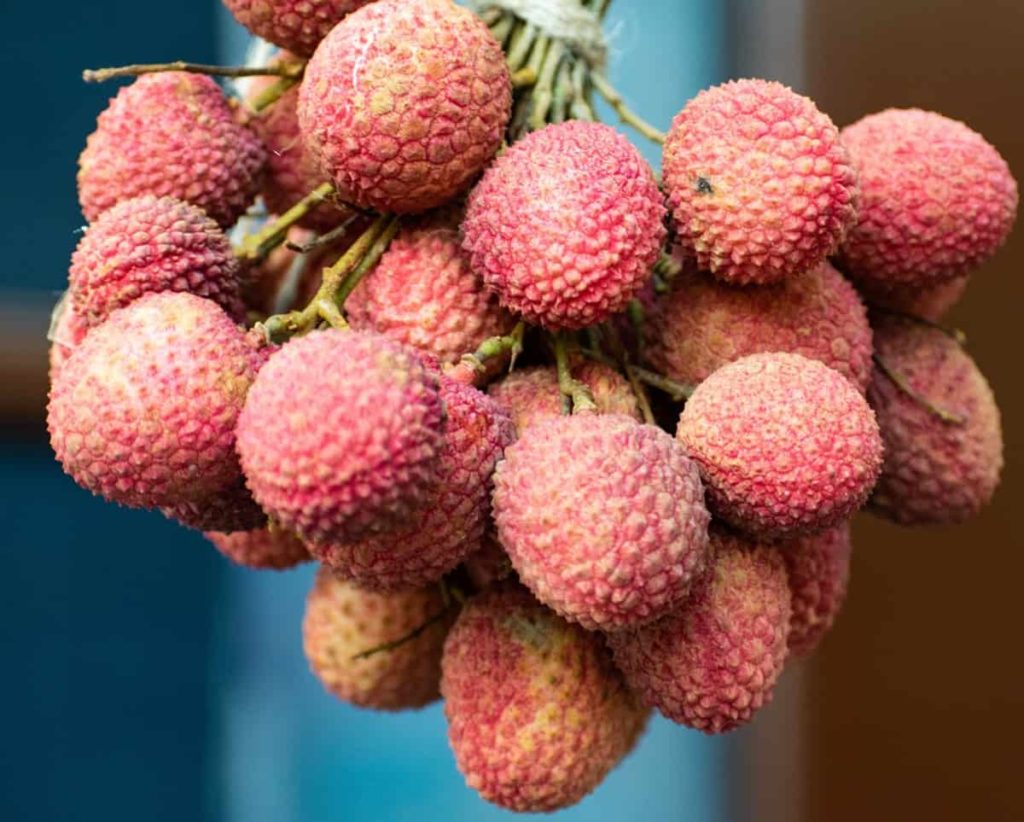
Top 15 steps to boost Litchi/Lychee yield
Step 1: Climate and soil
The Litchi thrives best in humid environments, with abundant rainfall, and is free from frost. During flowering and fruit development, the maximum temperature level varies from 21°C in February to 38°C in June. Deep and well-drained loam soil rich in organic matter is ideal. It is highly specific to seasonal requirements for its formation, plant growth, flowering, and consequently, area expansion. A humid climate, occasional rain, and cold and warm winds are ideal for cultivation.
Temperatures vary from 21°C to 38°C during flowering and fruiting in Litchi growing areas in India. It has been observed that Litchis require relatively low temperatures for the onset of flowering. Climate change in temperature is conducive to suitable fruit set. A dry climate, free from rain for about two months before flowering, differentiates flower buds and blooms and yields higher. Fog-free dry cold, mild sub-tropical summers, and intermittent monsoon rains during April-May have been highly favorable for flowering, better aril growth, and improved fruit quality.
Step 2: Management practices for increasing yield
In addition to management practice, beekeeping in Litchi orchards has resulted in a 15-20% increase in quality fruit production, as Litchis require cross-pollination. Throughout the year, proper operations are required to maintain vigor, growth, and productivity. Thus, Litchi needs adequate care and management throughout its life. Manures, report-based fertilizer use, and timely garden management methods provide consistent fruit.
In case you missed it: Growing Lychee from Seed (Litchi/Lichi) – a Full Guide
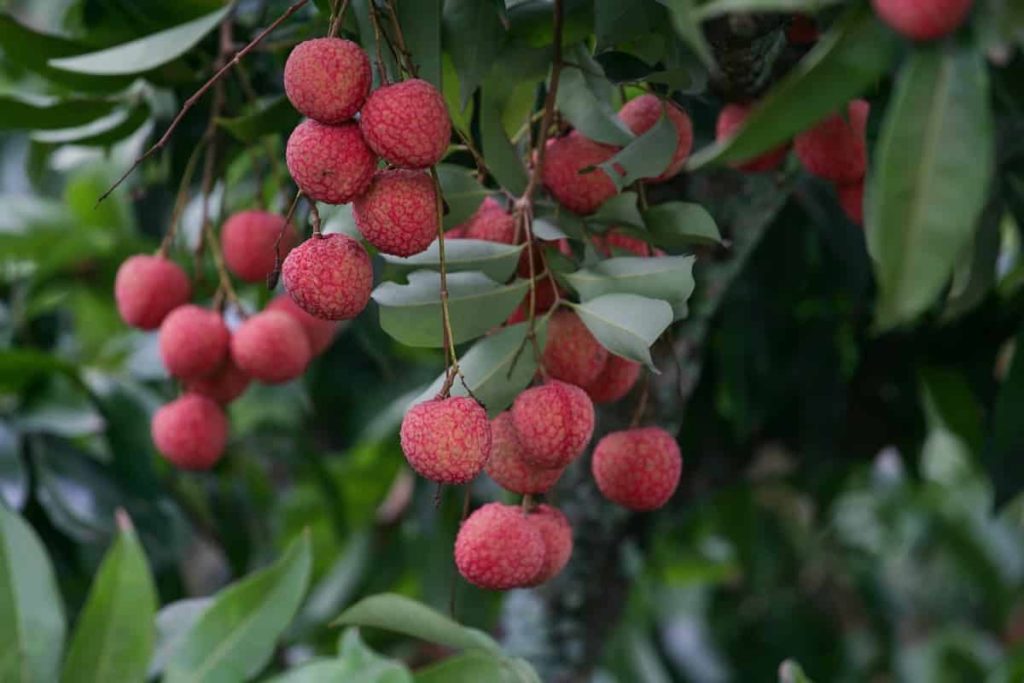
Litchi’s cultivation and potential yield are affected by many physical ailments such as fruit breakage and rupture, flower and fruit drop, sunburn, fruit growth impediment, irregular bearing, black spots, etc. So, it is necessary to know the causes and symptoms properly to manage these disorders for increased quality Litchi production.
Step 3: Light requirement for proper growth
Litchi grows in full sun, but be aware that plants need to adapt. Young plants that are not accustomed to full sun will be exposed to sudden exposure to bright light, but they will perform better once adapted.
Step 4: Propagation method for proper plant growth
Propagation of Litchi can be done successfully by cutting and grafting, but air layering is the most common and easy method. About 2 cm wide, the bark is removed from under a bud, about 1-year-old and 2.5-4 cm healthy in the air layering. The cut is surrounded by a clay ball containing sphagnum moss wrapped in a polythene sheet.
Both ends are tied with a thin rope or rubber band to be practically closed with air. When enough roots are formed in about two months, the branch is cut under the soil and placed in the nursery. July-October is the best time. Plants at least six months old should be planted in the permanent field in the monsoon.
Step 5: Poor fruiting / irregular-fruiting
In the Litchi cultivated areas of the country, poor fruiting or/ irregular fruiting are problems. The bearing capacity of Litchi shoots varies, while some of the current year bearing terminals are more productive next year (70-95%). Non-adoption of good management practices leads to irregular effects; even regular bearing plantings of perfect management practices include late application of fertilizers (especially nitrogen fertilizers) and manures, high frequency, and heavy irrigation just before the flowering period.
Step 6: Training and pruning for more crop yield
Training is essential for the Young Litchi plant. Once the tree is well established, only dead and diseased branches are removed. Training means removing dead and diseased branches to create a good shape and strong framework. Pruning is helpful to improve fruit production and quality. In the early stages, plant training is necessary to provide the required framework. Unwanted branches should be pruned to shape and promote tree trunk and crown growth.
Three to four branches are allowed to form a suitable frame of the tree at a distance of 60-75 cm from the opposite ground. In addition, congested and cross-branched branches are removed to facilitate better growth. In growing and mature trees, non-fruiting non-productive branches should also be cut under the canopy. Dry, diseased, and scissor-shaped branches should also be removed from time to time.
Light pruning after harvest is conducive to better growth, fruit, and yield. During fruiting, the panicle is broken with an 8-10 cm twig to promote a new flush and better effect for the coming year. Light pruning after harvest is conducive to better growth, fruit, and yield.
In case you missed it: Litchi Fruit Farming Information Guide
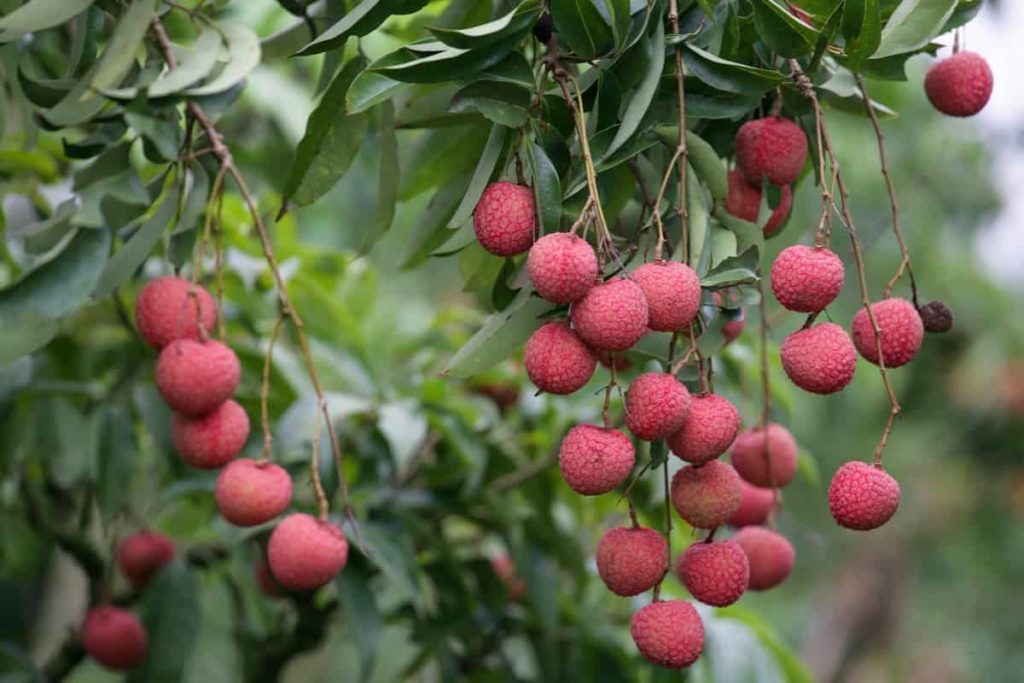
Step 7: Plant care for increasing crop yield
Good hygiene is essential for a healthy and disease-free plant. It is advisable to cultivate up to 7-10 cm as Litchi is a deep-rooted tree. It takes at least three years for Litchi to flower, so it is recommended to cultivate it with Vegetables, Pulses, Alfalfa, and early growing fruit plants like Papaya. Hand weeding or hoeing is laborious, so pre-emergence herbicide like Diuron or Atrazine by 2 kg/ha at a 1-month interval keeps the weed under control.
Step 8: Water requirement for enhanced fruit quality
These plants prefer abundant and regular watering throughout the year. Litchi does not naturally rest in winter, so the suspension of watering it will not be as beneficial as some other fruit trees. Watering during fruit harvest can increase fruit quality and yield. As Litchi is an evergreen plant, maintaining maximum soil moisture is essential for growth, development, and fruit production.
Irrigation at the stage of fruit development is necessary for better fruit production and quality. Water pressure should not be allowed for the plant’s rapid growth, whereas water pressure is beneficial in separating fruit buds in the reproductive phase. Irrigation at intervals of 2-3 days during the early stages of plant formation is necessary. In addition, young plants should be irrigated at intervals of 3 to 5 days in the dry season and winter months.
Step 9: Intercropping increases fruit set
It is a slow-growing crop and takes about 7-10 years to become commercially viable. Intercrops can be taken in the first 3-4 years. It will provide additional annual income and soil enrichment and help control weeds by improving soil conditions. Early growing plants like Peaches, Plum, and Kinnow can be taken as intercrop.
In case you missed it: Intercropping In Fruit Crops – In India
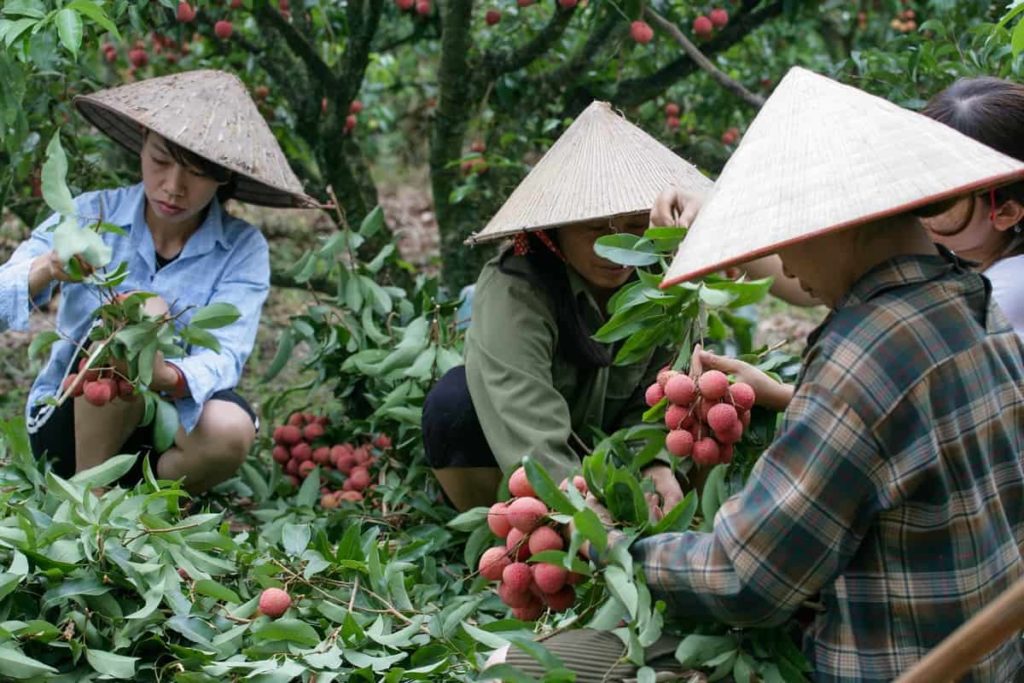
In addition, vegetables and pulses are preferred as intercrops. When the garden becomes commercially viable, uproot intercropped crops. Litchis are cross-pollinated and pollinated by insects, bees, etc. Place 20-25 boxes of bees per hectare for proper pollination and fruit set.
Step 10: Control flower and fruit drop
Sometimes, low yields are observed even after planting many flowers and fruits as the Litchi trees drop heavy flowers and fruits between flowering and fruit ripening. Only a small portion (2-18%) of it is carried to maturity in different crops. Flower and fruit drop are caused by failure of fertilization, embryo abortion, nutritional and hormonal imbalances, external factors such as high temperature, low humidity, strong westerly winds, and fruit borer and heavy particle attacks.
Younger trees experience fewer drops than older trees. There is a difference of 3.0-39.6% between the maximum reduction of fruits during the first fortnight after fruit set and harvesting time. The specific relationship between auxin production in fruit development and scratching in Litchi has also been considered. Flower and fruit drop in Litchi is due to;
- Fertilization failure, Embryo abortion, nutrition, and hormonal imbalance, especially auxin and
- External biotic (fruit borer and heavy mite attack) and abiotic factors (western winds, low humidity, and high temperature).
Flower and fruit drop management
- The retention of more Litchi fruits can be ensured by controlling winter shoots and flower quality.
- Timely treatment of plants to produce strong and healthy shoots delays flowering and increases the proportion of female flowers and, finally, the fruit set rate.
- Bees are an essential pollinating agent in Litchi. Increasing the bee population in orchards ensures better pollination and fertilization, which grows fruit set and retention.
- A spray of ZnSO4 @ 0.2% 30 days before the emergence of the pancreas produces healthy flowers resulting in more fruit set.
- Foliar use of 0.2% boron 2-3 times during fruit growth and development enhances fruit retention, reduces cracking, improves fruit color, and enhances sweetness and maturity, resulting in standard yield.
- Fruit drop can be reduced by spraying ZnSO4 and synthetic auxins such as 3,5,6-trichloro-2-pyridyl-oxyacetic acid (3,5,6-TPA) on fruits that increase fruit yield.
In case you missed it: Summer Crops in India – For Vegetables, Flowers, Fruits, Herbs
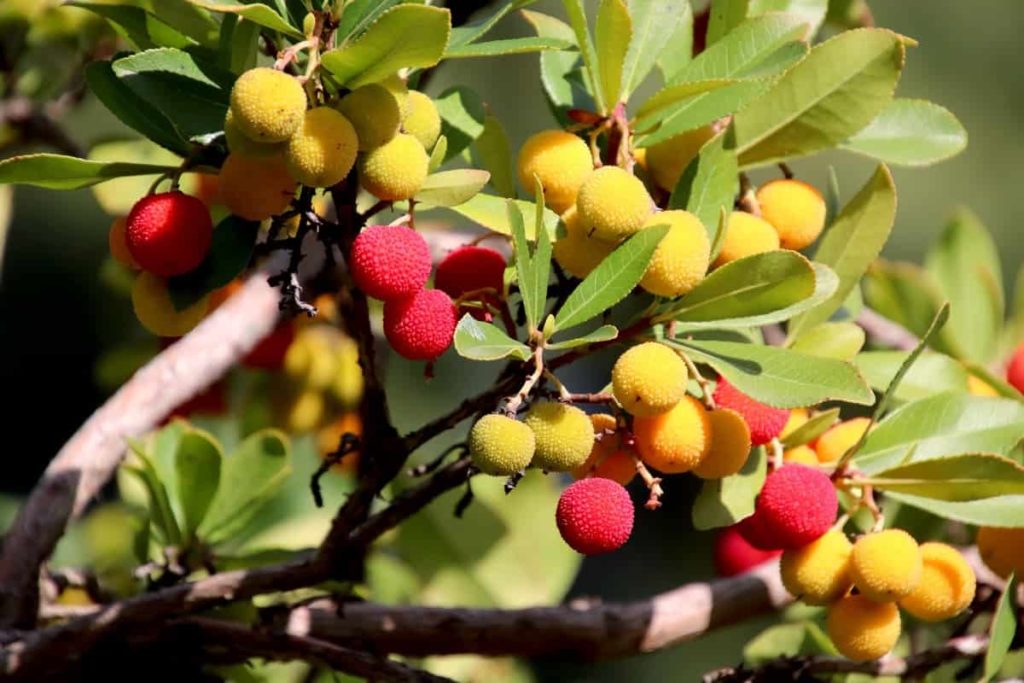
Fruit drop is a significant physical disease of Litchi that occurs immediately after fruiting and lasts up to a month, depending on the weather conditions and crop management. The reduction percentage currently varies according to the prevailing fields and climatic conditions. Of the many contributing factors, endogenous hormone levels may be to some extent responsible. During the fruit’s growth and development stage, spraying vermiwash at 100 ml 2 to 3 times weekly reduces the Litchi fruit drop.
Step 11: Fertilizer and manures for fruit growth
Field experiments performed on different crops at different locations have clearly shown the effect of NPK classified diet on fruit growth, production, and quantity. For 12–15-year-old trees, it is recommended to plant 600-800 grams N, 200-300 grams P2O5, and 400-600 grams K2O per plant. Nitrogen and potassium should be applied in 2 to 3 parts and P2O5 in two parts. Excessive use of nitrogen fertilizer before flowering should be avoided.
The use of phosphorus at flower bud separation improves flowering and fruiting. Cakes and fertilizers are commonly used to get better-quality fruits. In general, Litchi orchards with high doses of organic manure have better yields and quality than orchards with chemical fertilizers.
Step 12: Tips for organic Litchi cultivation
- Use of bio-mulch for moisture conservation, herb suppression, and organic matter supplementation.
- Follow the cultural (deep plowing in summer), mechanical (hand picking and killing, light traps, birds perch, etc.), and biological methods for pest control.
- Intercropping of legumes with orchards. Regularly spray with neem-based formulations, bio-pesticides, and bio-enhancers (panchagavya, vermi wash).
Step 13: Fruit cracking
Fruit cracking is a severe physical condition in Litchi that occurs during its growth and development and causes a significant loss of economic productivity. Fruit breakage in Litchi corresponds to a period characterized by high daytime temperatures (35-40°C) and relatively low humidity (60%). It is a severe problem for fruit development in Litchi. Distributed fruits are immovable and thus cause great loss to the farmers. Also, an additional application of Ca, Zn, B, Cu, and Mn is recommended for best growth.
The use of 0.6% Ca as calcium chloride improves fruit weight and quality. Zn is applied with lime in the form of hydrated 0.5% zinc sulfate, which helps to reduce fruit fall and increase fruit production and quality. Boron in boron (600 ppm) enhances the fruit set and reduces fruit breakage. Proper watering will help prevent many common Litchi problems, including fruit distribution.
In case you missed it: Vegetables to Grow in Summer, Fruits to Grow in Summer
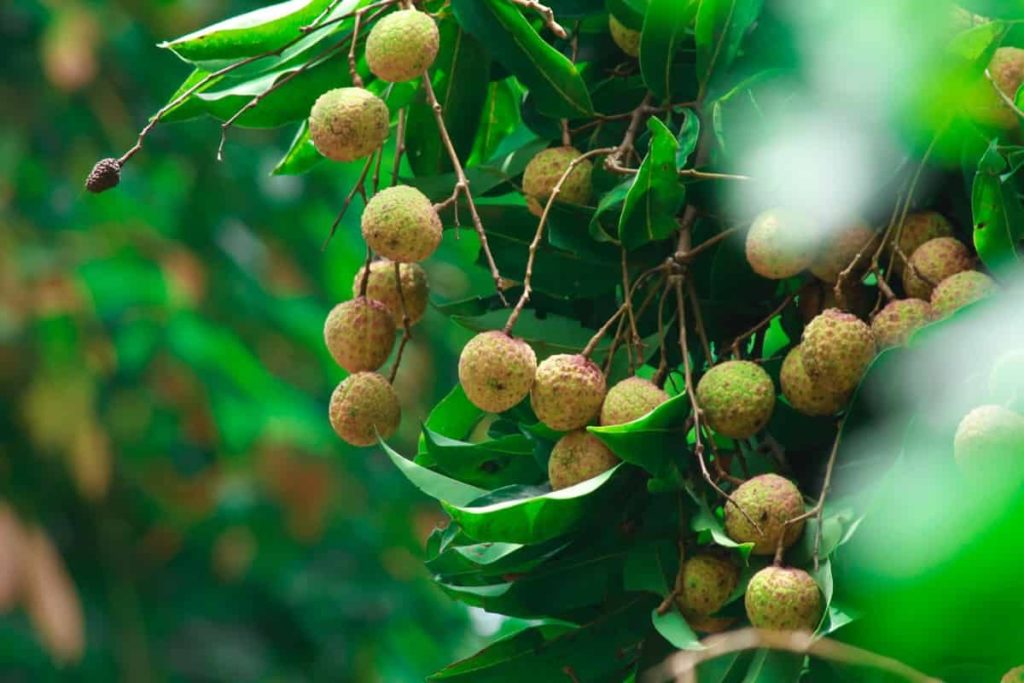
Growth regulators NAA (20mg / liters of water), GA (40mg / liters of water), 2, 4-D (10mg / liters of water), 2, 4, 5-T (10 mg / liters of water) of fruits. Reduce the incidence of breakage. Weekly spraying of zinc sulfate (1.5%) or calcium nitrate (1.5%) effectively reduces cracking every week, from pea size to fruit picking. Irrigate the garden periodically to retain moisture in the field.
Step 14: Symptoms of Litchi diseases and their control
Although the bright, green leaves of Litchi trees are resistant to many fungal diseases, they can still experience their fair share of disease-related issues. Many of these problems are caused by growing Litchi trees in unsuitable places. Fungal pathogens cause the most common Litchi tree diseases. It is best to use a fungicide that prevents early spring in fruiting plants or foods. How to control Litchi diseases depends on the specific disease, but many fungal diseases cannot be controlled with fungicides when they cause symptoms.
Therefore, Litchi tree growers often use a protective lime sulfur spray like Litchi flowers. Mite and shoot borer are two serious pests that cause severe damage to crops. In the case of the September-October flush, the latter attack is more frequent than in the February-March flush. Litchi shoot borer can be effectively controlled by spraying Cypermethrin (0.01%) twice at seven days during flushing. Other insects include bark-eating caterpillars, weevils, and worm/fruit stone borer.
Litchi is almost free of fungal diseases. Some fungal diseases can be controlled by spraying fungicides immediately after symptoms. No fungicide should be applied to trees or fruits 20 days before harvest.
Step 15: Harvesting for improving crop yield
Litchi plants begin to bear fruit after the fifth year of planting, and yields increase with increasing tree size until 20. Litchi harvest is never done fruit by fruit, as it is difficult to remove from the stem without damaging the skin and reducing the shelf life. If you plan to put it straight in your mouth, you should always pick individual Litchis. Instead, cut the Litchis into clumps, using pruning scissors to cut the stems with many fruits. As the fruits ripen at different rates, you may want to harvest every 3 to 4 days for several weeks.
- Economical Aquaculture: A Guide to Low-Budget Fish Farming
- 15 Common Planting Errors That Can Doom Your Fruit Trees
- How to Make Houseplants Bushy: Effective Tips and Ideas
- Innovative Strategies for Boosting Coconut Pollination and Yield
- Pollination Strategies for Maximum Pumpkin Yield
- The Complete Guide to Chicken Fattening: Strategies for Maximum Growth
- Natural Solutions for Tulip Problems: 100% Effective Remedies for Leaf and Bulb-Related Issues
- Revolutionizing Citrus Preservation: Towards a Healthier, Greener Future
- Natural Solutions for Peony Leaf and Flower Problems: 100% Effective Remedies
- Maximizing Profits with Avocado Contract Farming in India: A Comprehensive Guide
- Natural Solutions for Hydrangea Problems: 100% Effective Remedies for Leaf and Flowers
- The Ultimate Guide to Choosing the Perfect Foliage Friend: Bringing Life Indoors
- From Sunlight to Sustainability: 15 Ways to Use Solar Technology in Agriculture
- The Ultimate Guide to Dong Tao Chicken: Exploring from History to Raising
- The Eco-Friendly Makeover: How to Convert Your Unused Swimming Pool into a Fish Pond
- Mastering the Art of Delaware Chicken Farming: Essentials for Healthy Backyard Flocks
- 20 Best Homemade Fertilizers for Money Plant: DIY Recipes and Application Methods
- How to Craft a Comprehensive Free-Range Chicken Farming Business Plan
- Brighten Your Flock: Raising Easter Egger Chickens for Beauty and Bounty
- How to Optimize Your Poultry Egg Farm Business Plan with These Strategies
- Subsidy for Spirulina Cultivation: How Indian Government Schemes Encouraging Spirulina Farmers
- Ultimate Guide to Raising Dominique Chickens: Breeding, Feeding, Egg-Production, and Care
- Mastering the Art of Raising Jersey Giant Chickens: Care, Feeding, and More
- Ultimate Guide to Raising Legbar Chickens: Breeding, Farming Practices, Diet, Egg-Production
- How to Raise Welsummer Chickens: A Comprehensive Guide for Beginners
- How to Protect Indoor Plants in Winter: A Comprehensive Guide
- Ultimate Guide to Grow Bag Gardening: Tips, Tricks, and Planting Ideas for Urban Gardeners
- Guide to Lotus Cultivation: How to Propagate, Plant, Grow, Care, Cost, and Profit
- Agriculture Drone Subsidy Scheme: Government Kisan Subsidy, License, and How to Apply Online
- Ultimate Guide to Raising Araucana Chickens: Breed Profile, Farming Economics, Diet, and Care
- Bringing Hydroponics to Classroom: Importance, Benefits of Learning for School Students
- Ultimate Guide to Raising Polish Chickens: Breed Profile, Farming Economics, Diet, and Care
- Ultimate Guide to Raising Australorp Chickens: Profile, Farming Economics, Egg Production, Diet, and Care
- Silkie Chicken Farming: Raising Practices, Varieties, Egg Production, Diet, and Care
- Sussex Chicken Farming: Raising Practices, Varieties, Egg Production, Diet and Care
- Homemade Feed Formulations for Livestock: Discover Cost-effective Starter to Finisher Feed Recipes